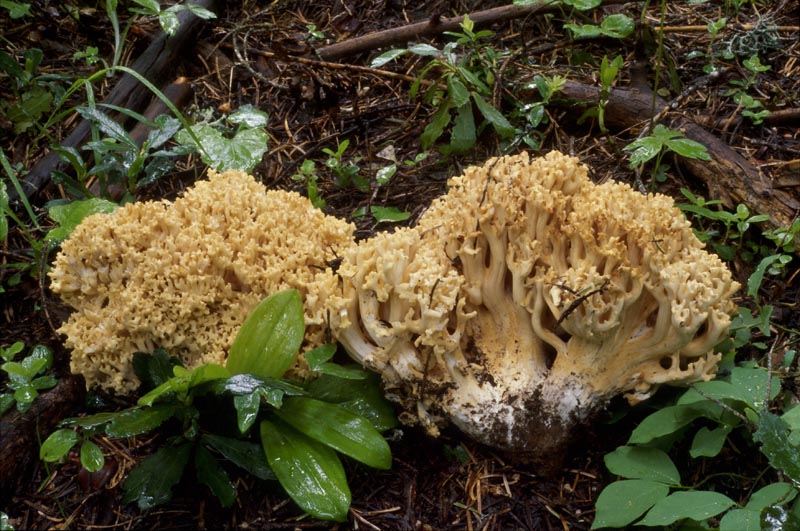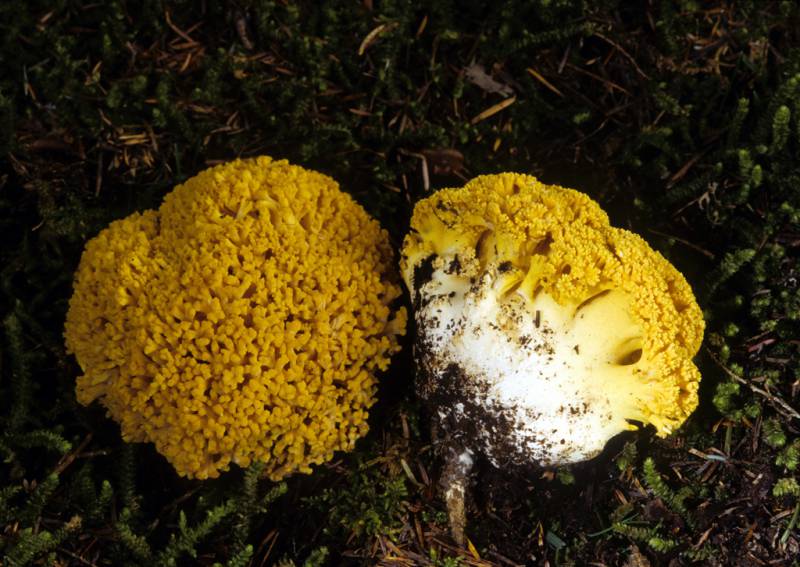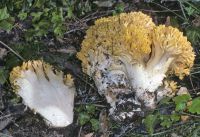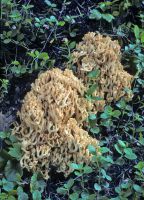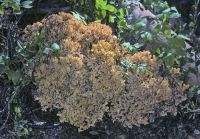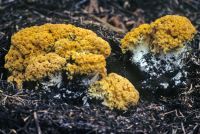Habitat: Occurs mostly in the mountains east of the Cascade crest.
Conservation Status: Not of concern
Edibility: R. magnipes is an edible species, but Orson Miller reported that, in some people, it has laxative effects
R. magnipes is an edible species, but Orson Miller reported that, in some people, it has laxative effects
Ramaria magnipes is one of the species that fruit in spring. The light yellowish fruitbodies are medium to large, with an often massive white stipe that develops brown stains in age. It has fairly long (9.5--14 x 3--5 µm) smooth or slightly ridged spores and clamped basidia. The flesh has a slow, weak amyloid reaction. Similar to other spring-fruiting corals, most of the fruitbody is buried in the soil, and the young branches look much like heads of cauliflower emerging from the soil and needle litter.
- var. magnipes – big-base goldie
PNW Herbaria: Specimen records of Ramaria magnipes in the Consortium of Pacific Northwest Herbaria database
CalPhotos: Ramaria magnipes photos

